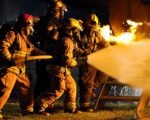Nikon, a leading camera manufacturer, has announced a partnership with NASA, the U.S. space agency, to develop and test a pioneering lunar camera technology. The technology, which is based on Nikon’s flagship Z 9 mirrorless camera, will be used by NASA astronauts to capture high-quality images and videos of the Moon and its surroundings. The partnership marks a milestone for Nikon, as it is the first time that its mirrorless camera will be used in space.
The Nikon Z 9 is Nikon’s latest and most advanced mirrorless camera, which was launched in November 2021. The camera features a 45.7-megapixel full-frame sensor, a new image-processing engine, and a 8K video recording capability. The camera also boasts a fast and accurate autofocus system, a high-resolution electronic viewfinder, and a robust and durable body.

The Nikon Z 9 is designed to meet the diverse and demanding needs of professional photographers and videographers, who require high performance, reliability, and versatility. The camera can handle various shooting scenarios, such as sports, wildlife, landscape, and portrait, and deliver stunning results in terms of image quality, speed, and accuracy.
NASA’s lunar exploration mission
NASA, which stands for National Aeronautics and Space Administration, is the U.S. government agency responsible for the civilian space program, as well as aeronautics and aerospace research. NASA has a long and illustrious history of space exploration, which includes the Apollo missions to the Moon, the Space Shuttle program, and the International Space Station.
NASA is currently preparing for its next lunar exploration mission, which is called Artemis. The mission aims to land the first woman and the first person of color on the Moon by 2024, and to establish a sustainable human presence on the lunar surface by the end of the decade. The mission also intends to use the Moon as a platform for scientific discovery and technological innovation, as well as a gateway for future exploration of Mars and beyond.
The collaboration between Nikon and NASA
The collaboration between Nikon and NASA began in January 2024, when NASA received multiple Nikon Z 9 cameras and a selection of NIKKOR Z lenses for its use on the International Space Station (ISS). The ISS is a habitable artificial satellite that orbits the Earth at an altitude of about 400 kilometers, and hosts a crew of six astronauts from various countries. The ISS serves as a laboratory for conducting scientific experiments, a testbed for developing new technologies, and a platform for observing the Earth and the space environment.
The Nikon Z 9 cameras and lenses will be used by the ISS crew to document their daily activities, conduct research, and capture images and videos of the Earth and the space. The cameras and lenses are physically unmodified, meaning that they are the same as the ones available to consumers on Earth. However, Nikon engineers worked closely with NASA to create a custom firmware for the cameras, to better suit the needs and conditions of the space station.
The cameras and lenses will also be used for the Artemis mission, which will involve sending the Orion spacecraft and the Gateway station to the lunar orbit, and landing the Human Landing System on the lunar surface. The Nikon Z 9 cameras and lenses will be used by the astronauts to capture images and videos of the Moon and its features, such as craters, mountains, and valleys. The cameras and lenses will also be used to record the historic moments of the lunar landing and the lunar exploration.
The collaboration between Nikon and NASA is a remarkable achievement for both parties, as it demonstrates their mutual trust, respect, and expertise. The collaboration also showcases the capabilities and potential of the Nikon Z 9 camera and the NIKKOR Z lenses, which can withstand the harsh and challenging environment of space, and deliver high-quality and reliable performance. The collaboration also benefits the public, as it enables them to witness and appreciate the beauty and wonder of the Earth, the Moon, and the space, through the eyes of the Nikon Z 9 camera and the NASA astronauts.








